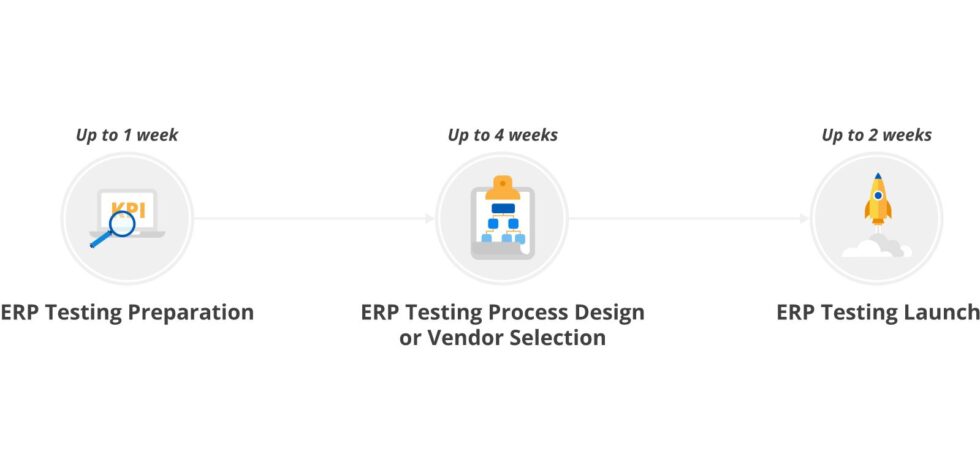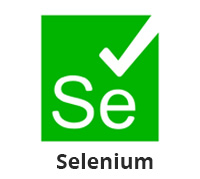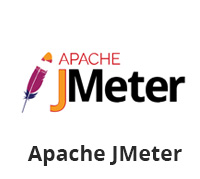ERP testing comprises QA activities that verify ERP efficiency, sustainability, security, and user-friendliness. A balanced ERP test strategy should include different testing types (including functional, ETL, and performance testing) to check if ERP software is stable and scalable, unifies business data, and enables flawless automation of complex workflows.
Every ERP testing setup plan is different, as each enterprise resource planning solution is based on a specific business logic, differs in functions, third-party integrations, and deployment type (on-premises, cloud-based, hybrid). Below are the essential steps typical for most ERP testing projects:

Decide on a basic set of KPIs such as the number of test cases per iteration, rejected defects, ERP requirements not covered by test cases, the test automation rate, tests’ execution time. Consider ERP testing quality-related risks and design a risk mitigation plan.
Decide whether ERP testing will be performed in-house or outsourced (fully or partially). If you opt for the in-house ERP testing option, design the collaboration scenarios between the stakeholders (a PM, BAs, the development team, the QA team, key intended ERP users, etc.). Assign a QA manager to design the ERP requirements specification in a way suitable for testing (for example, in the form of user stories, acceptance or unit tests).
Note: ScienceSoft does not recommend entrusting a test automation architecture to a manual test engineer, even if they have a programming background, as the risks of tests’ maintainability and stability issues will increase.
Then, proceed to the ERP testing design activities or vendor selection.
Choose, configure, and integrate relevant tools (test management, CI/CD, test automation tools, etc.)
At this stage, the ERP QA team prepares the test environment, designs test cases and develops test scripts, creates, gathers, and prepares test data.
As soon as the ERP testing is launched, the QA team should regularly report on the progress. The team should continuously collaborate with the development team to improve the test suite granularity and increase the test coverage.
World Quality Report 2019-2020 claims that flaky test environments seriously hinder testing ROI.
To pave the way for a seamless ERP testing process, you need to apply a holistic approach to the tools’ selection paying special attention to their compatibility and ability to cater for your ERP’s specifics. Here is a sample toolkit that may be appropriate for ERP testing.




With ERP testing consulting you get:
With ERP testing outsourcing you get:
ERP testing artifacts compliant with ISO/IEC/IEEE 29119-3:2013, including regular detailed reports on defects and test closure.
© 2022 | All Rights Reserved